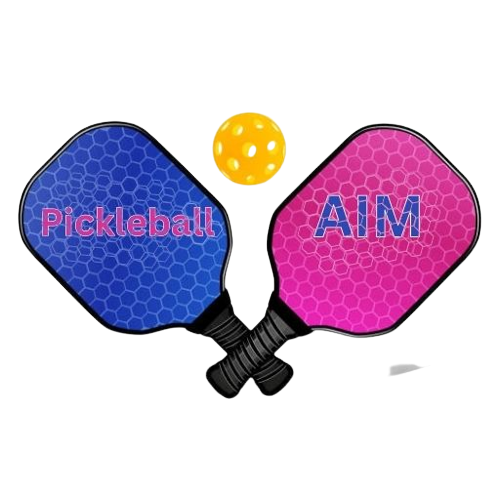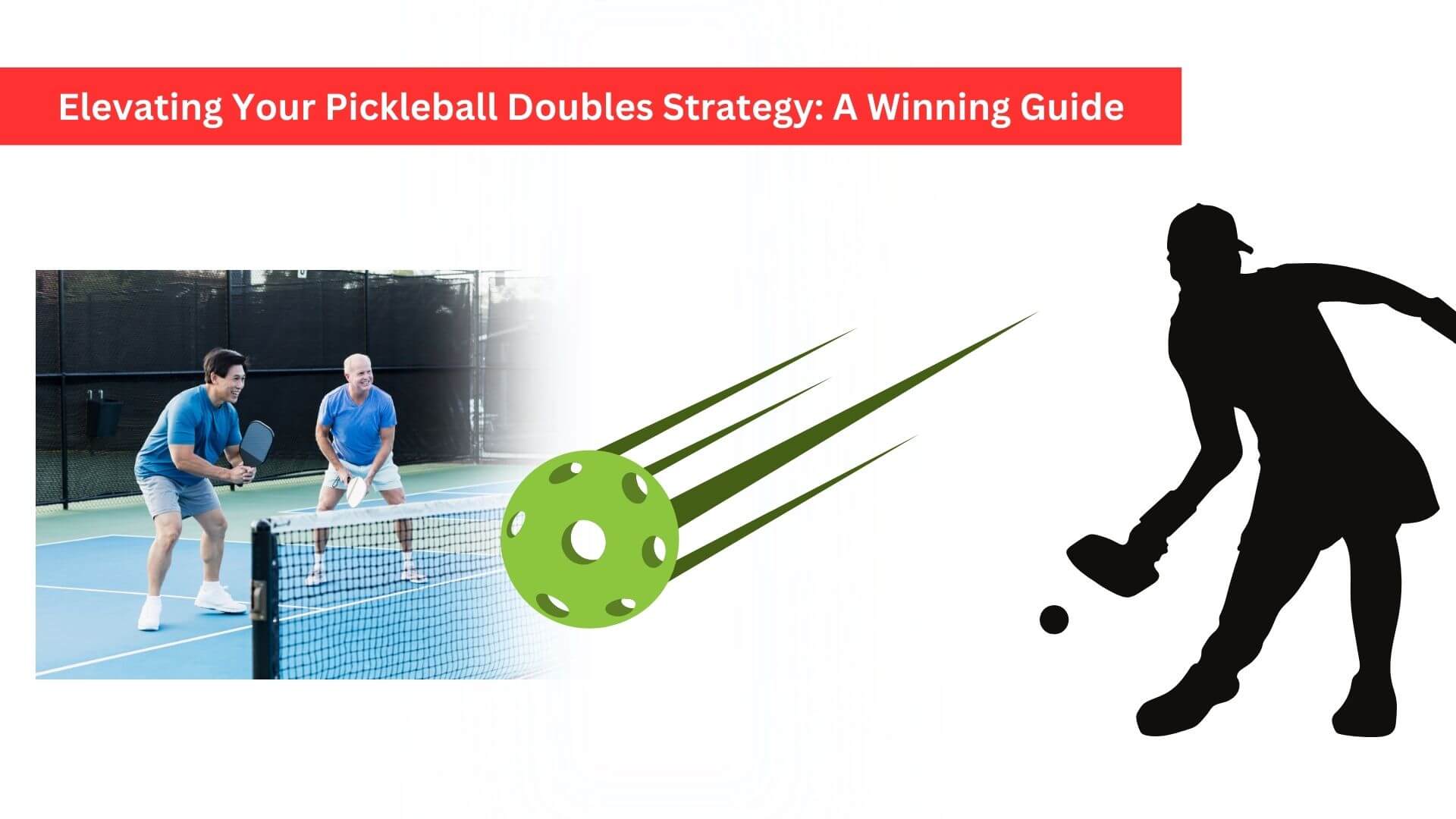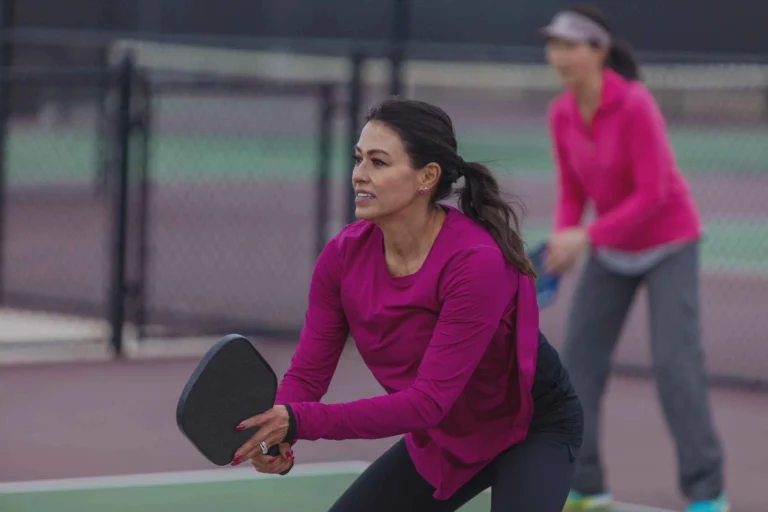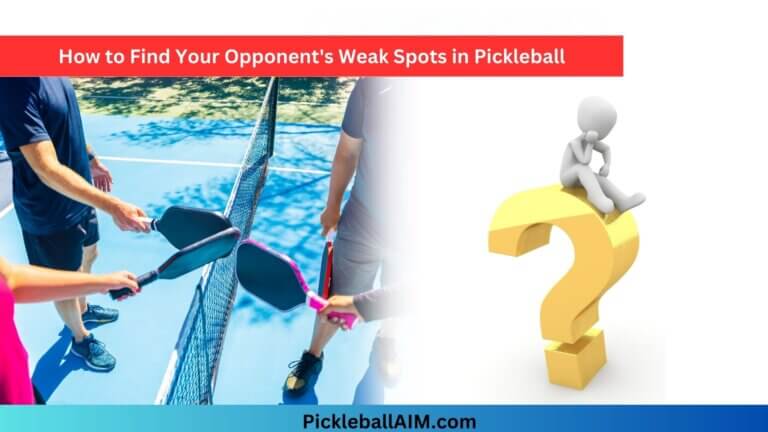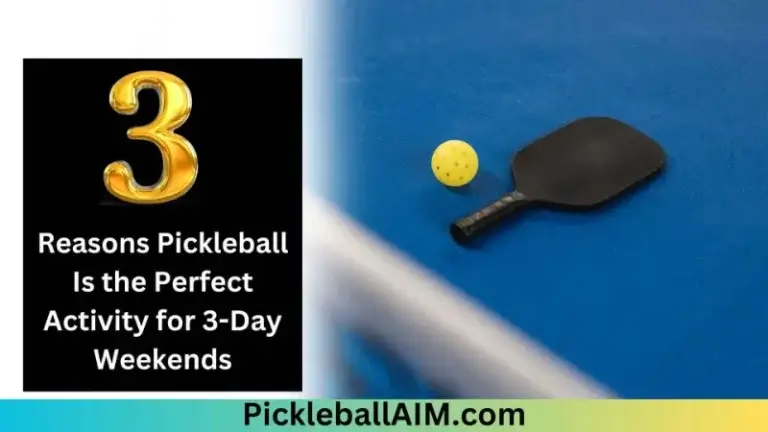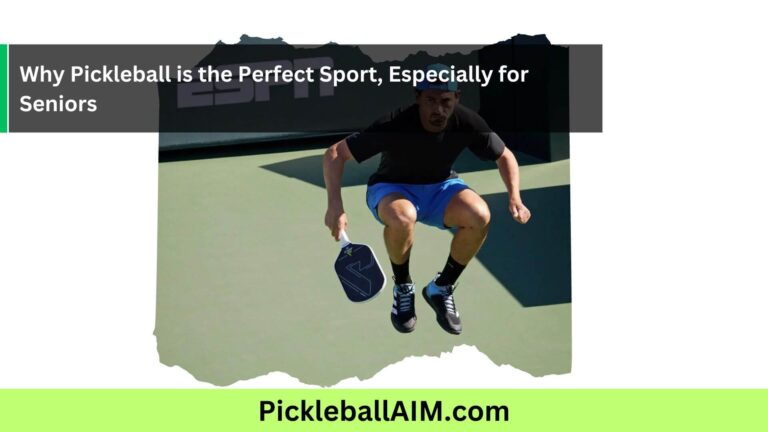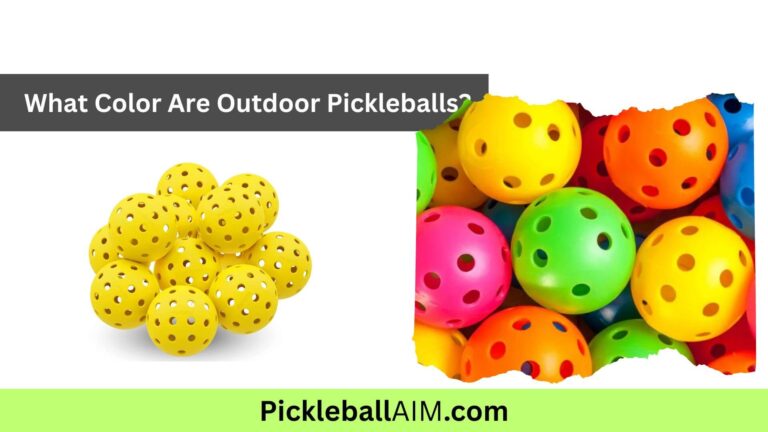Elevating Your Pickleball Doubles Strategy: A Winning Guide
How To Improve Pickleball Doubles Strategy?
Improving your pickleball doubles strategy involves effective communication with your partner, maintaining court positioning, coordinating shot selection, and practicing your teamwork. Work on your serves to gain an advantage, focus on placement over power, and learn to anticipate your opponents’ moves. Additionally, refining your net game, including dinking and volleying, can help you dominate the kitchen and control the pace of the game. Consistent practice and game experience with your partner are essential for refining your doubles strategy and achieving success on the pickleball court.
45 Best Tips For Elevating Your Pickleball Doubles Strategy
Pickleball is a dynamic and rapidly growing sport, blending elements of tennis, badminton, and ping-pong. While it’s enjoyable at any level, understanding and implementing effective doubles strategies can significantly enhance your game and teamwork. In this article, we’ll delve into the world of pickleball doubles strategy, offering valuable insights and tips to help you and your partner dominate the court.
1. Communication is Key
Effective communication is the foundation of successful pickleball doubles. You and your partner should have clear signals and cues to indicate who is taking the ball, who is covering the middle, and who is responsible for the sides. Non-verbal cues like hand signals or eye contact can work wonders.
2. Work the Middle
The middle of the court is often referred to as the “No-Volley Zone” or “Kitchen”. It’s a high-impact area in doubles play. By controlling the middle, you can disrupt your opponents’ strategies and limit their angles for attacking shots. The player at the net should be especially vigilant in guarding this area.
3. Cover the Sidelines
While controlling the middle is crucial, you shouldn’t neglect the sidelines. Stay active and agile to cover shots that go wide. This might mean diagonal movements to cover cross-court shots effectively.
4. Effective Net Play
The net is your friend in pickleball. Make use of the “soft game,” which involves gentle shots that drop over the net and into the kitchen. This can force your opponents to hit high balls, giving you opportunities to take control of the net and finish points.
5. Use the Lob Wisely
The lob is a valuable tool in doubles play. A well-timed lob can put pressure on your opponents, disrupt their positioning, and give you an advantage. However, overusing lobs can be counterproductive, so use them strategically.
6. Poach and Intercept
“Poaching” is when one player unexpectedly moves to intercept the opponent’s shot. This can surprise your opponents and result in easy points. Effective poaching requires good anticipation and timing.
7. Serve Placement
Place your serves strategically to create difficulties for your opponents. A well-placed serve can force a weak return, setting up an easy put-away for your team.
8. Vary Your Shots
Don’t be predictable with your shots. Mix in dinks, drives, lobs, and smashes to keep your opponents guessing. Variety can be a game-changer in doubles play.
9. Stay Positive
Maintain a positive attitude, even when things aren’t going your way. Encourage your partner and keep the energy positive on the court. This can boost team morale and help you bounce back from setbacks.
10. Practice Together
Consistent practice with your partner can enhance your chemistry and understanding of each other’s playing styles. It can also help you develop effective doubles strategies specific to your strengths and weaknesses.
11. Analyze Your Opponents
Pay attention to your opponents’ tendencies and weaknesses. Adapt your strategy accordingly. For example, if you notice a player consistently struggling with their backhand, focus on targeting that side.
12. Stay Mobile
Pickleball is a fast-paced sport, and you’ll need to be agile and mobile. Work on your footwork to ensure you’re in the right position to make shots and cover the court effectively.
13. Fitness Matters
Physical conditioning is crucial in pickleball doubles. Maintaining your endurance and agility can help you stay competitive during long rallies and matches.
14. Learn from the Pros
Watch professional pickleball players in action. Observing their strategies, shot selection, and positioning can provide valuable insights for improving your own game.
15. Enjoy the Game
Lastly, remember that pickleball is a game meant to be enjoyed. While winning is important, maintaining a positive and sportsmanlike attitude is equally valuable. Cherish the camaraderie and fun that come with playing doubles.
The Art of Doubles Strategy
As you continue to refine your pickleball doubles strategy, consider these advanced tactics and insights to take your game to the next level:
16. Stay Calm Under Pressure
In close matches, maintaining composure is essential. Avoid panicking during long rallies or crucial points. A clear mind and steady hand can be the difference between a win and a loss.
17. Switch Up Serving Strategies
Don’t always serve to the same opponent. Mix up your serves to keep your opponents guessing. Vary the speed, spin, and placement to add complexity to your serves.
18. Exploit Weak Links
Identify the weakest player on the opposing team and target them with strategic shots. This could involve directing shots to their weaker side or capitalizing on their movement limitations.
19. Master the Third Shot
The third shot is critical in pickleball doubles. Aim for a soft and controlled shot that lands in the kitchen, setting up your team for a strong net presence.
20. Adapt to Changing Conditions
Weather and court conditions can impact your strategy. Wind, sun, and court surface variations require adaptation. Be prepared to adjust your game accordingly.
21. Use Angle Shots
Mastering the art of angled shots can give your opponents less time to react and force them out of position. Use cross-court angles to create openings and exploit gaps in your opponents’ defense.
22. Focus on Anticipation
Anticipation is a key skill in pickleball doubles. Try to predict your opponents’ shots based on their positioning, body language, and previous patterns. This can give you a split-second advantage.
23. Develop Non-Dominant Shots
Don’t neglect your non-dominant hand and weaker shots. By strengthening your weaker side, you’ll become a more versatile player and less predictable on the court.
24. Learn From Losses
Losses are opportunities for growth. After a match, analyze what went wrong and what you can improve. Learning from your mistakes is one of the most effective ways to progress in pickleball.
25. Participate in Coaching
Coaching sessions, whether one-on-one or group-based, can provide valuable insights and guidance. A knowledgeable coach can help you fine-tune your strategy and address specific weaknesses.
26. Match Strategy to Partner
Every doubles partner is unique. Adapt your strategy to complement your partner’s strengths and weaknesses. Effective teamwork involves synchronizing your playing styles.
27. Fitness and Conditioning
Maintaining peak physical condition is crucial for sustained high-level play. Engage in regular fitness and conditioning routines to improve your agility, endurance, and strength on the court.
28. Simulate Game Scenarios
During practice sessions, simulate real-game scenarios. Practice specific situations, such as defending against smashes or executing effective counterattacks.
29. Enjoy the Learning Journey
Pickleball, like any sport, is a continuous learning experience. Embrace the journey of improvement and relish the joy of becoming a more skilled and knowledgeable player.
30. Be a Sportsman
Above all, maintain the spirit of sportsmanship. Congratulate your opponents on good plays, respect the rules, and exhibit fair and respectful behavior on the court. A positive attitude fosters a welcoming pickleball community.
In the world of pickleball doubles, strategy and tactics can be as exhilarating as the physical aspects of the game. By incorporating these advanced tips into your gameplay, you can elevate your performance, strengthen your partnership with your doubles teammate, and truly enjoy the art of strategy in pickleball. Whether you’re competing for fun or at a competitive level, the right strategy can make all the difference on the court. So, keep practicing, keep learning, and continue to savor the rich and rewarding world of pickleball doubles strategy.
Building a Winning Doubles Partnership
Beyond mastering individual strategies and techniques, developing a cohesive and successful pickleball doubles partnership is a pivotal aspect of achieving consistent success on the court. Here are some key principles for building a winning doubles partnership:
31. Trust and Communication
Trust forms the foundation of a strong partnership. Develop open and effective communication with your doubles partner. This includes not only on-court communication but also discussing strategies and reviewing past games off the court.
32. Complement Each Other
Identify each player’s strengths and weaknesses and design your strategy accordingly. One player might have a powerful drive, while the other excels at net play. Make the most of your individual skills to create a well-rounded team.
33. Cover for Each Other
In the heat of play, mistakes can happen. A great partner knows how to cover for their teammate when they’re out of position or make an unexpected error. It’s about teamwork and supporting each other.
34. Stay Positive
Maintain a positive and encouraging attitude, both when things are going well and when they’re not. A supportive partner can help boost morale during challenging moments and keep the momentum going.
35. Practice Together
Consistent practice with your doubles partner is invaluable. It helps you understand each other’s playing styles, anticipate each other’s moves, and develop synchronized strategies.
36. Respect Roles
Clarify the roles of each player on the court, particularly during serves and returns. Knowing who is responsible for what can reduce confusion and enhance your teamwork.
37. Celebrate Successes
Acknowledge and celebrate each other’s successes, no matter how small. A winning point can provide a morale boost and reinforce the sense of partnership.
38. Debrief After Games
After each match or practice session, take some time to debrief. Discuss what worked well, what needs improvement, and how you can enhance your strategy. This reflective process can lead to ongoing growth.
39. Maintain a Unified Front
Present a united front to your opponents. Even if you’re frustrated or disagree with your partner’s decision, avoid showing discord on the court. Maintaining a harmonious demeanor can disrupt your opponents’ focus.
40. Adapt and Learn Together
Be willing to adapt your strategies based on the challenges you face and lessons learned in each game. A dynamic approach and a willingness to learn as a team are essential for long-term success.
41. Stay in Sync
Practice and play together regularly to stay in sync. Your movements, positioning, and understanding of each other’s game will improve over time, making your partnership more effective.
42. Build a Game Plan
Before matches, collaborate with your partner to establish a game plan. Discuss tactics, key areas to focus on, and potential strategies for victory. Having a clear plan can boost confidence and coordination on the court.
43. Embrace Adversity
Losses and setbacks are part of any sport. Embrace adversity as an opportunity to grow and improve as a team. Use losses as stepping stones to future victories.
44. Play to Your Partner’s Strengths
Adapt your playstyle to maximize your partner’s strengths. If your partner excels at the net, focus on getting them into that position. If they have a strong serve, set them up for successful serving opportunities.
45. Celebrate the Partnership
Remember that your pickleball partnership is a special bond built on trust and shared experiences. Enjoy the camaraderie and the shared pursuit of improvement and success.
Conclusion
Achieving success in pickleball doubles involves mastering both individual skills and the art of partnership. By fostering trust, communication, and a strong team dynamic, you can create a formidable doubles partnership that thrives on the court. Continuously learning and adapting together will ensure that you and your partner become a force to be reckoned with in the exciting world of pickleball doubles. So, practice hard, communicate effectively, and celebrate each other’s growth and achievements as you build a winning partnership in pickleball.
